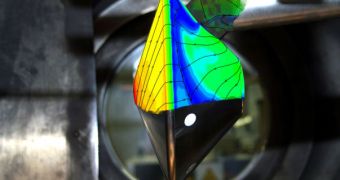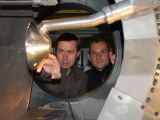Determining if even basic life exists on any other planet or moon in the solar system, and especially on Mars, is the main goal of space exploration today. But investigating this essential question is not easy, when considering that the answers lie millions of kilometers away from our planet. Rovers, landers and orbiters are the main instruments we have of discovering traces of microorganisms on the Red Planet, but getting them there is a highly complex process, Space Fellowship reports.
The planet's atmosphere is the first obstacle for exploration robots, but it was overcome by several instruments until now, especially the ones sent by NASA. The European Space Agency (ESA) is planning to send a rover to the surface of Mars as well, so it needs to be able to counteract all the negative effects that an atmospheric reentry may have on its billion-euro robot. In order to assess the threats, it is using a unique facility at the German Aerospace Center, which can simulate the conditions ExoMars will meet as it approaches the surface of Mars.
The other planet's atmosphere is made almost entirely (95 percent) of carbon dioxide, with very little other gases, and is therefore extremely thin. “Mars’ atmosphere is completely different from Earth’s air,” DLR Spacecraft Department Director Dr. Klaus Hannemann says. Plans for the ESA rover are to have it descend at considerable speeds, of several times that of sound, through this extremely thin atmosphere, so mission planners need to know precisely how this will influence the capsule carrying the small, car-sized exploration instrument.
It is believed that carbon dioxide will break into all its components as heat generated by friction between the spacecraft and the atmosphere burns it up. “This can influence the distribution of pressure on the capsule and thus affect the aerodynamic behavior,” Dr. Hannemann adds. The investigation was conducted in one of the most important, large-scale European plants for researching the hypersonic re-entry, the high-enthalpy tunnel in Gottingen. The tunnel is able to simulate the conditions that the ExoMars capsule will have to face, at about 40 kilometers above the planet’s surface.

 14 DAY TRIAL //
14 DAY TRIAL // 
